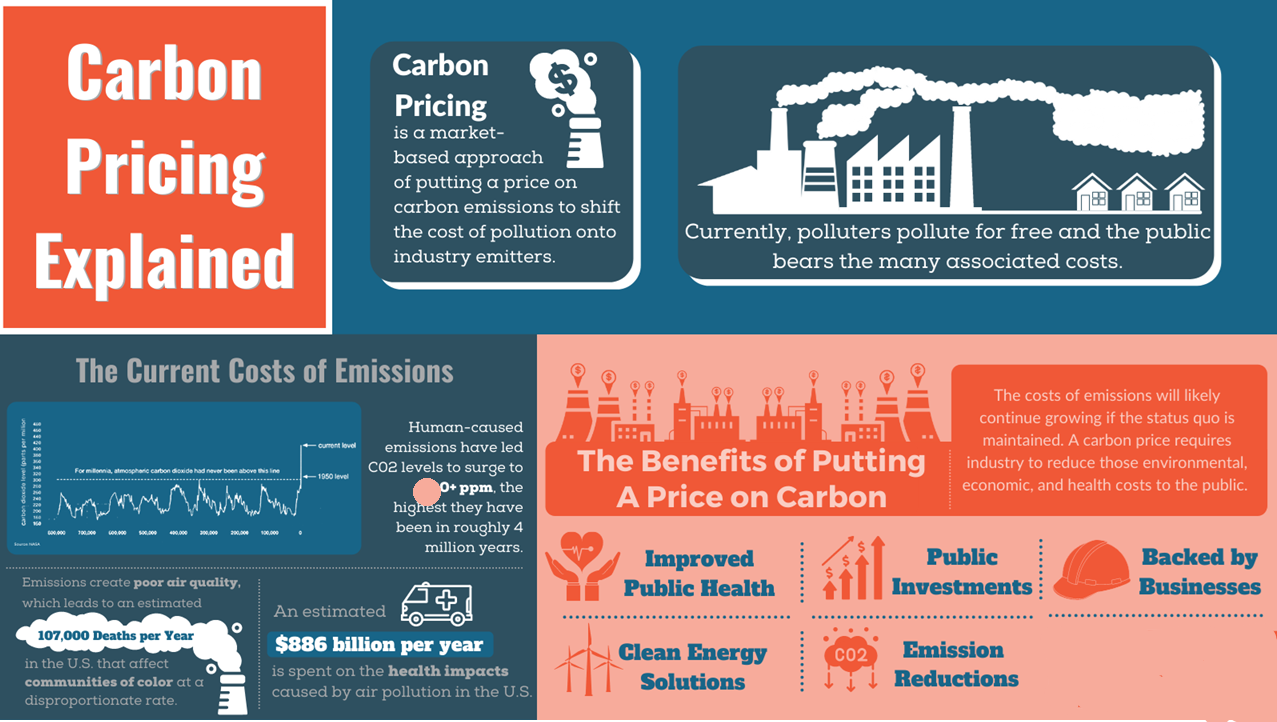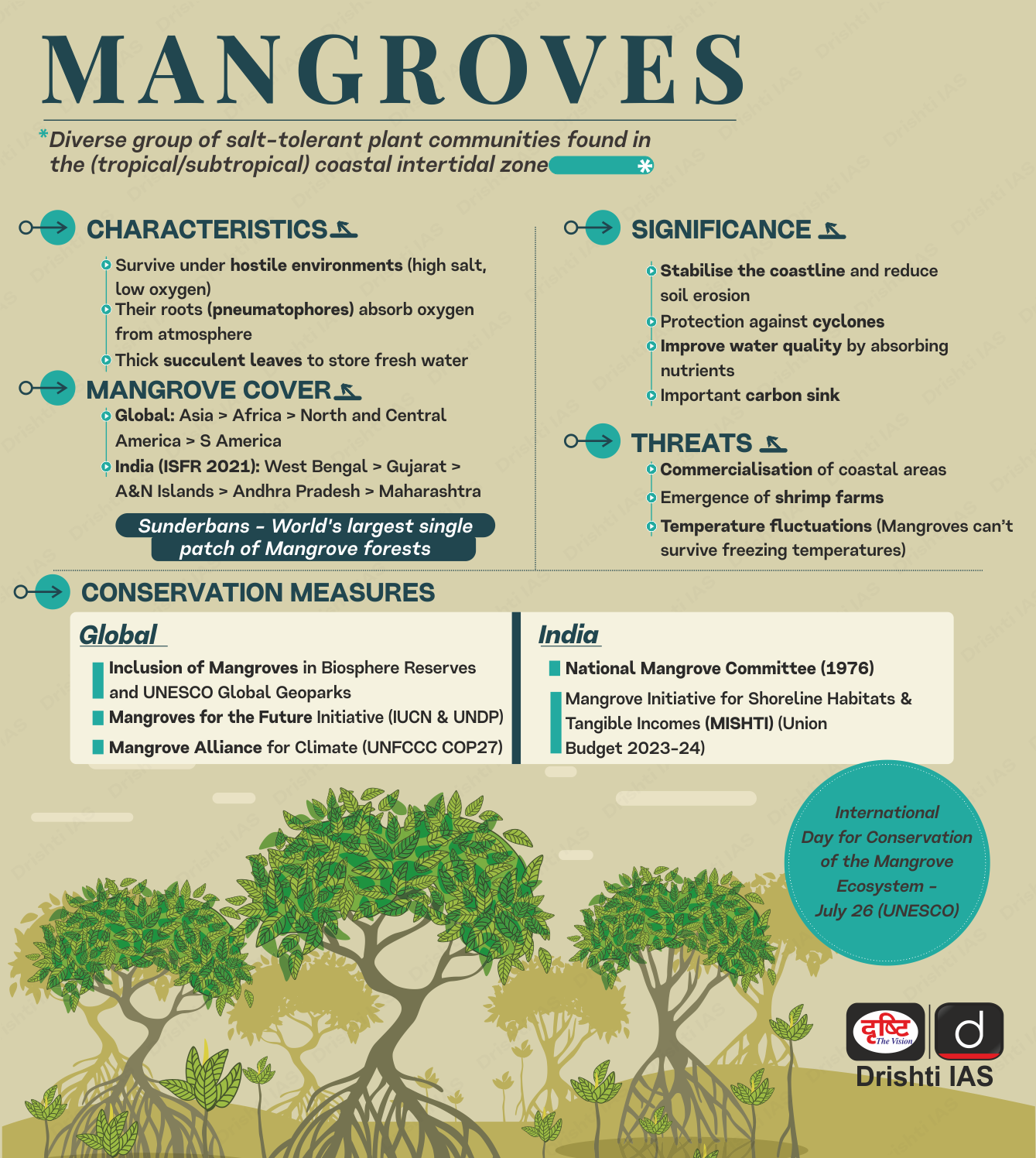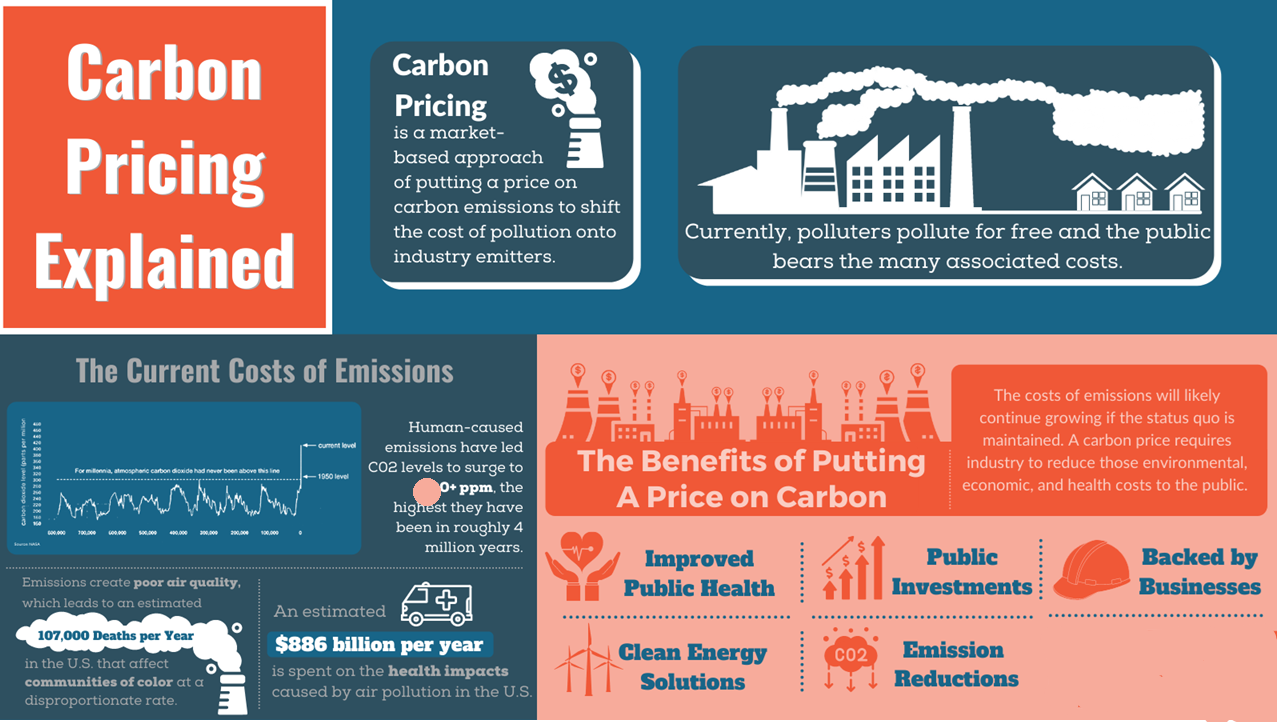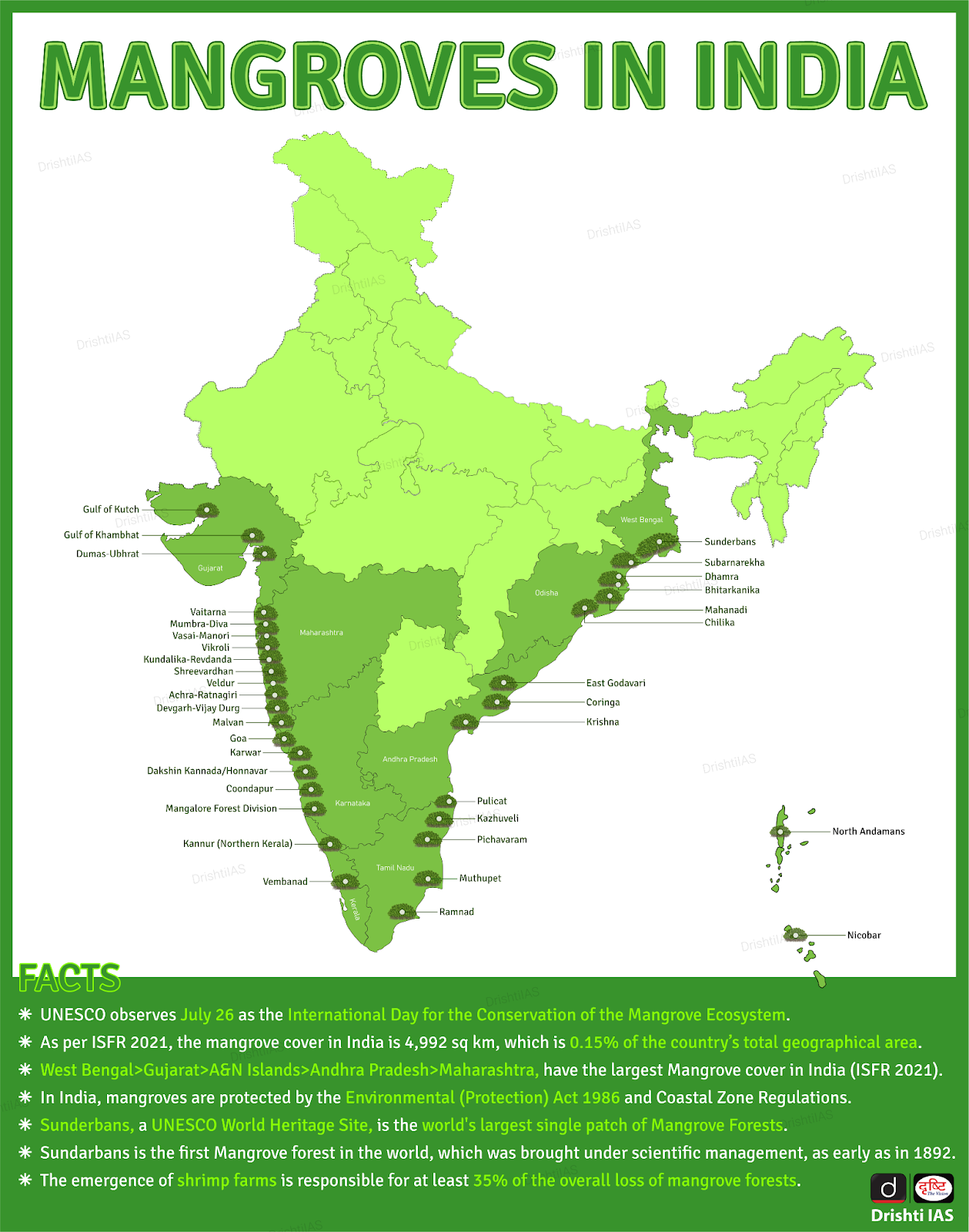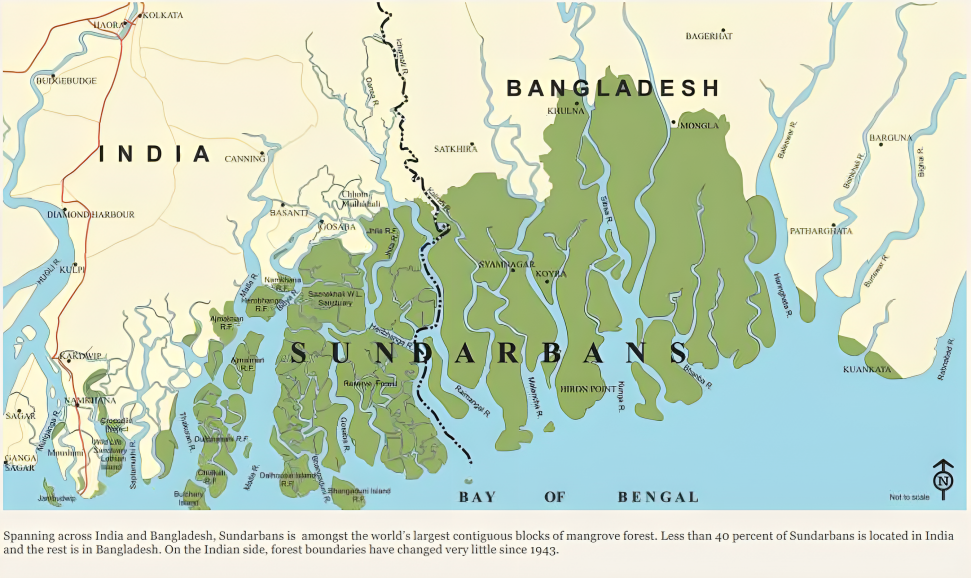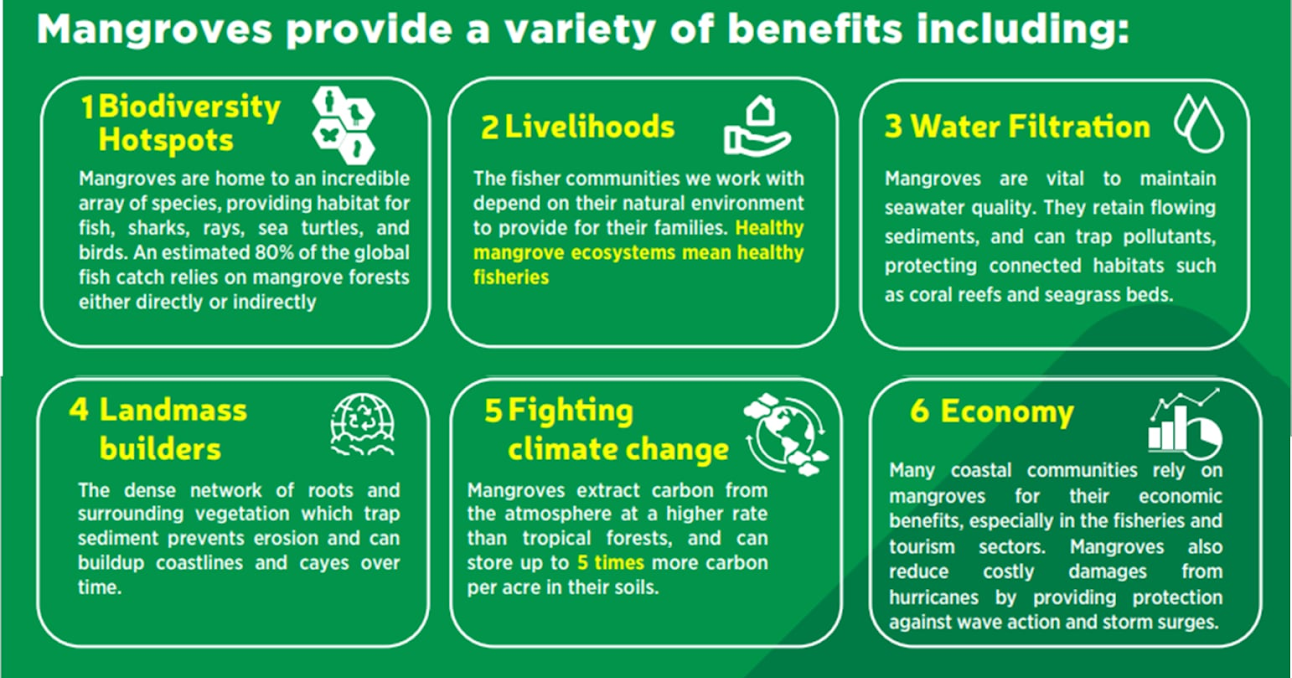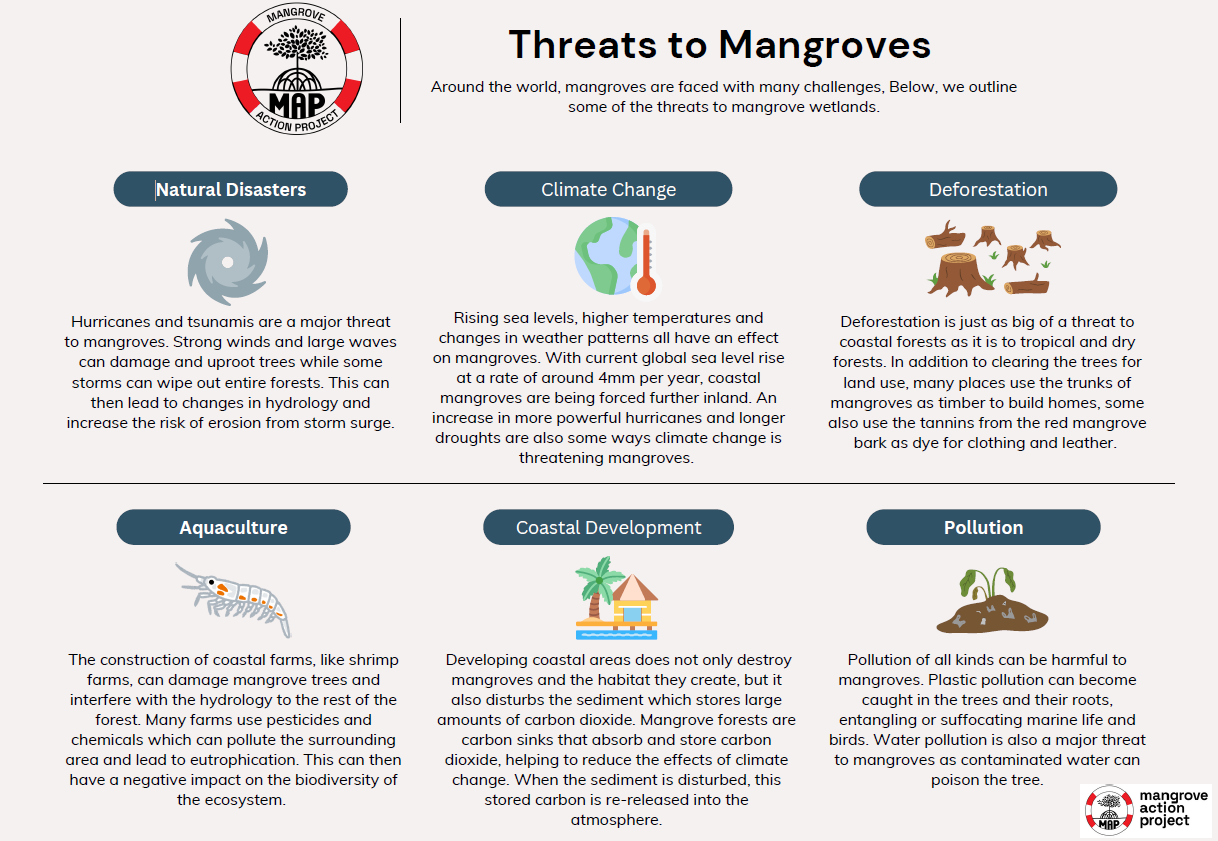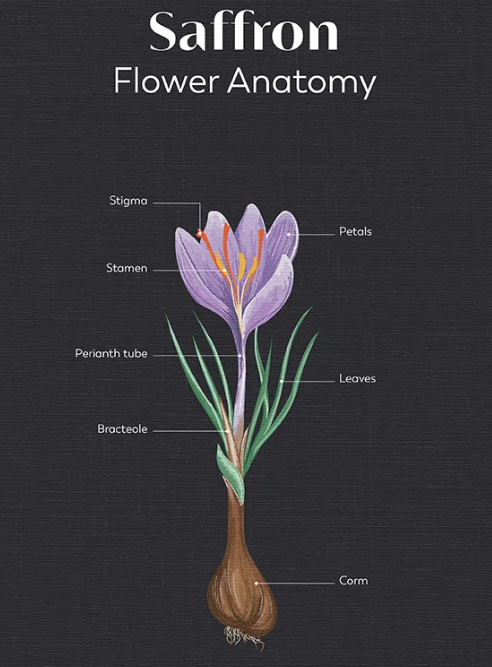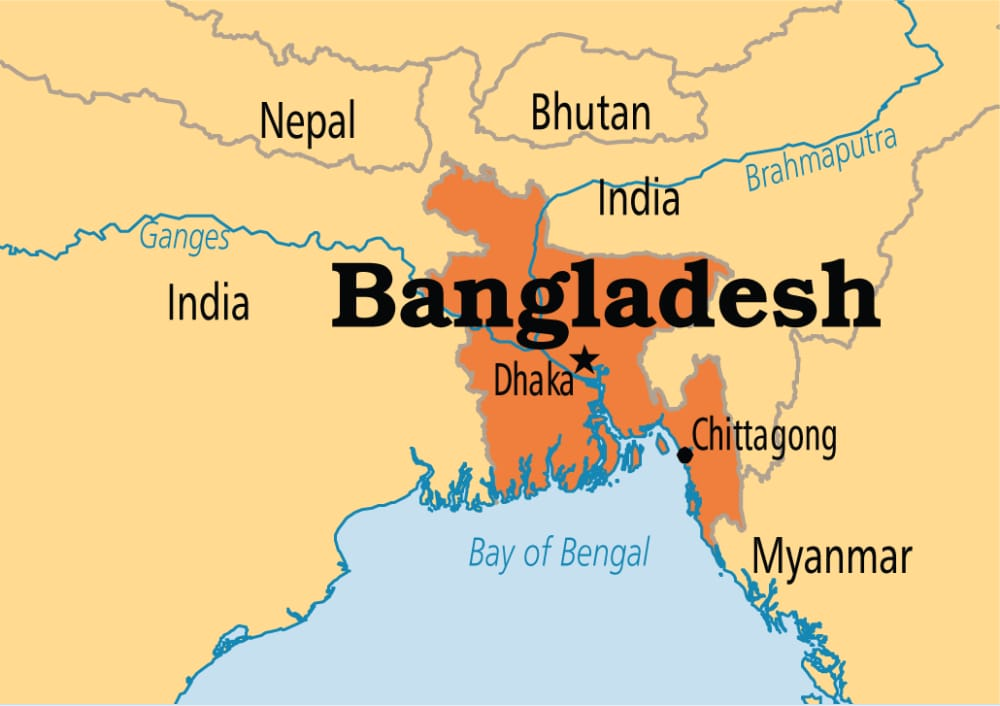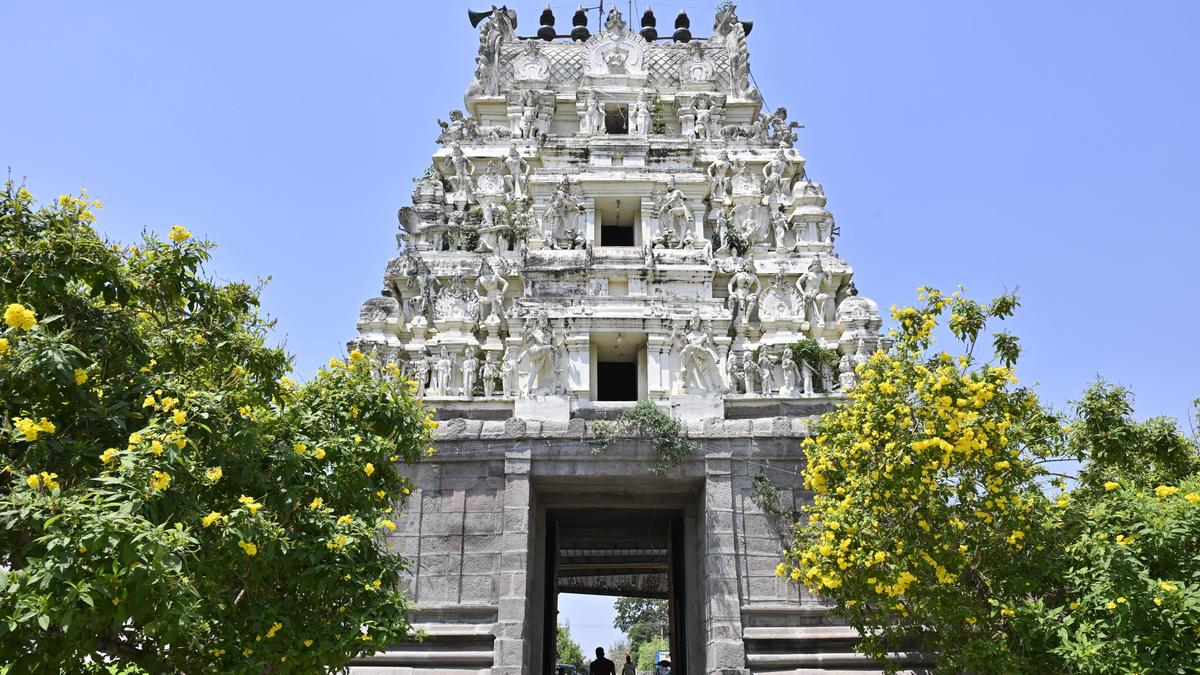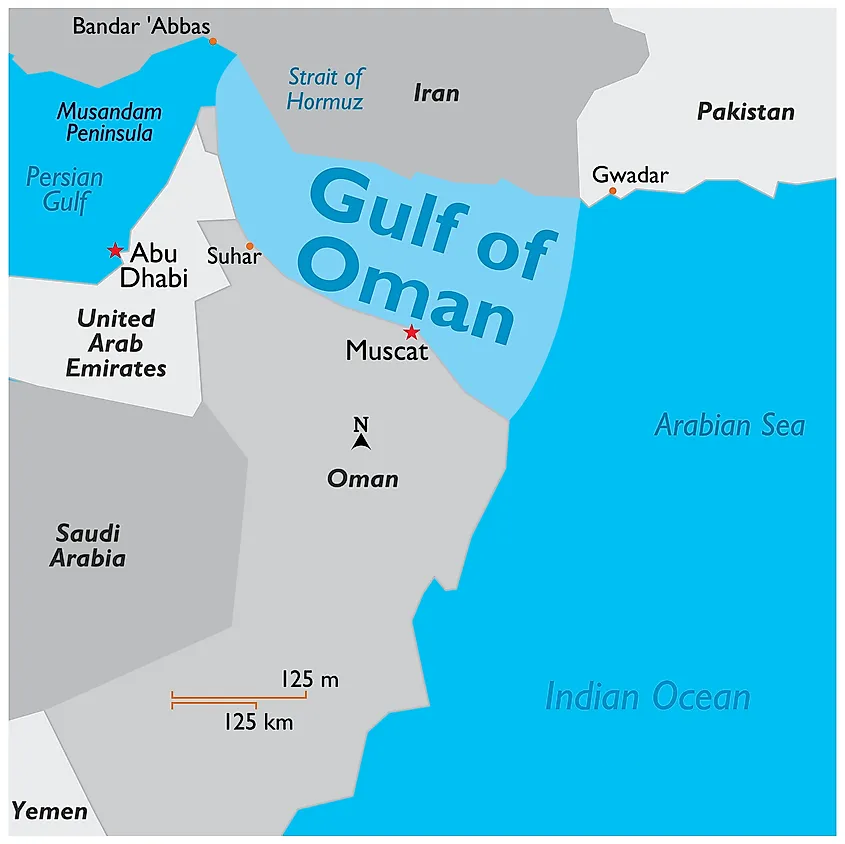Biodiversity & Environment
Carbon Credit Trading Scheme
For Prelims: Perform, Achieve, and Trade (PAT) scheme, Carbon Credit Certificate, Bureau of Energy Efficiency, Carbon Market
For Mains: Carbon Credit Trading Scheme, Strengthening CCTS in India, Carbon Pricing
Why in News?
The Carbon Credit Trading Scheme (CCTS), 2023 introduced under the Energy Conservation (Amendment) Act, 2022, replaces the Perform, Achieve, and Trade (PAT) scheme to establish the Indian Carbon Market (ICM), aligning with India’s climate commitments under the Paris Agreement.
What is the Carbon Credit Trading Scheme?
- CCTS: The CCTS is a market-based mechanism introduced to regulate and trade carbon credits under the ICM.
- The CCTS aims to decarbonize the Indian economy by pricing greenhouse gas (GHG) emissions and facilitating carbon trading.
- Transition from PAT to CCTS: The PAT scheme focused on energy efficiency improvements in energy-intensive industries through Energy Saving Certificates (ESCerts).
- CCTS replaces PAT, shifting the focus from energy intensity to reducing GHG emission intensity, monitoring emissions per tonne of GHG equivalent.
- It issues Carbon Credit Certificates (CCC), each representing a one-tonne CO2 equivalent (tCO2e) reduction.
- CCTS replaces PAT, shifting the focus from energy intensity to reducing GHG emission intensity, monitoring emissions per tonne of GHG equivalent.
- Mechanisms: CCTS introduces carbon pricing through two key mechanisms to ensure comprehensive carbon reduction efforts.
- Compliance Mechanism: Mandates energy-intensive industries (e.g., Aluminium, Cement, Fertilizers, Iron & Steel) to meet sector-specific GHG reduction targets. Entities exceeding targets earn CCC, those falling short must purchase credits.
- Offset Mechanism: Allows voluntary participation from entities outside the compliance framework to earn carbon credits by reducing emissions.
- Sectors Identified: CCTS initially includes energy-intensive industries such as iron & steel, aluminium, cement, fertilizers, petroleum refineries, pulp & paper, and textiles (account for 16% of India’s total emissions).
- The power sector (40% of India's GHG emissions) may be included later.
- Regulatory Oversight: Managed by multiple government bodies, including the Bureau of Energy Efficiency (BEE) and the National Steering Committee for Indian Carbon Market (NSCICM).
- Importance of CCTS in India’s Climate Goals: India aims to cut emission intensity by 45% by 2030. The CCTS drives private sector involvement, encouraging clean technologies, renewables, and carbon capture.
What is Carbon Pricing?
- About: Carbon pricing is an economic strategy that captures the external costs of carbon emissions (such as damage to crops, rising healthcare costs, and property losses due to extreme weather) and links them to their sources.
- This mechanism shifts the financial burden back to polluters, giving them the choice to either reduce their emissions, continue polluting and pay for it, or invest in cleaner technologies.
- Current global carbon pricing mechanisms cover 12.8 gigatonnes of CO₂ (25% of global emissions) across 89 countries.
- Mechanisms: Governments use 3 main approaches to price carbon, ensuring emissions reductions at the lowest possible societal cost.
- Emissions Trading System (ETS): Allows industries to trade emission units. It operates through two mechanisms; Cap-and-Trade and Baseline-and-Credit.
- In Cap-and-trade, a cap is set on emissions with companies below it can sell allowances, while those exceeding it must buy more.
- While Baseline-and-Credit rewards industries that reduce emissions below a set baseline by allowing them to sell credits to others.
- Carbon Tax: Unlike ETS, Carbon Tax directly sets a price on carbon emissions by charging a fixed tax per ton of CO₂.
- However, it does not guarantee a specific reduction in emissions, as industries decide whether to cut emissions or pay the tax.
- Crediting Mechanism: Allows GHG reductions from projects to generate carbon credits, which can be sold domestically or internationally for compliance or voluntary mitigation purposes.
- Emissions Trading System (ETS): Allows industries to trade emission units. It operates through two mechanisms; Cap-and-Trade and Baseline-and-Credit.
What is the Carbon Market?Click here to Read: Carbon Market |
What are the Challenges in Effective Implementation of CCTS?
- Target Setting and Carbon Pricing: Balancing emission reduction targets is crucial. Lenient targets can oversupply CCC, lowering prices, while stringent targets may increase compliance costs and inflation.
- Compliance and Enforcement Issues: Under PAT, 50% of the required ESCerts remained unpurchased, with no penalties imposed, indicating a lack of strict compliance and enforcement mechanisms in the carbon market that can impact CCTS, making it ineffective.
- CCTS may face the risk of double counting or inaccurate emissions reporting, as observed in global carbon markets.
- Delays in Credit Issuance: Delays in the issuance of credits under PAT since 2021 have reduced market confidence. Similar delays in CCTS CCC issuance could hinder participation and investment in clean energy.
- Transparency: Lack of publicly available data on industry emissions and compliance could reduce market trust.
How Can India Strengthen CCTS?
- Align with International Best Practices: Adopt lessons from the European Union (EU) ETS such as gradual tightening of caps, carbon price stability measures, and rigorous compliance frameworks.
- Build capacity for MRV (Monitoring, Reporting, and Verification) to ensure credibility.
- Robust Trading Platform: Introduce digital registries to track credits and prevent fraudulent activities.
- Ensure cross-border compatibility to avoid trade restrictions (e.g., EU’s Carbon Border Adjustment Mechanism, CBAM).
- Encourage Industry Participation: Provide incentives for early adopters, such as tax benefits for companies reducing emissions beyond compliance requirements.
- Promote investment in green technologies, renewable energy, and energy efficiency improvements.
|
Drishti Mains Question: Discuss the Carbon Credit Trading Scheme and challenges in implementing it. How can these challenges be addressed? |
UPSC Civil Services Examination, Previous Year Question (PYQ)
Prelims
Q. Consider the following statements (2023)
Statement—I: Carbon markets are likely to be one of the most widespread tools in the fight against climate change.
Statement—II: Carbon markets transfer resources from the private sector to the State.
Which one of the following is correct in respect of the above statements?
(a) Both Statement—I and Statement—II are correct and Statement—II is the correct explanation for Statement—I
(b) Both Statement—I and Statement—II are correct and Statement—II is not the correct explanation for Statement—I
(c) Statement—I is correct but Statement—II is incorrect
(d) Statement—I is incorrect but Statement—II is correct
Ans: B
Q. The concept of carbon credit originated from which one of the following? (2009)
(a) Earth Summit, Rio de Janeiro
(b) Kyoto Protocol
(c) Montreal Protocol
(d) G-8 Summit, Heiligendamm
Ans: B


Indian Economy
Rise of Quick Commerce in India
For Prelims: Quick commerce, E-commerce, Artificial Intelligence, Competition Commission of India, Open Network for Digital Commerce
For Mains: Impact of quick commerce on the Indian retail sector, Indian retail ecosystem
Why in News?
Quick commerce (Q-commerce) has transformed urban shopping habits by enabling deliveries within minutes.
- While it offers convenience and brand advantages, concerns over predatory pricing, data privacy, and the displacement of traditional retailers have sparked regulatory scrutiny.
What is Quick Commerce?
- About: Q-commerce, a subclass of e-commerce, is an on-demand delivery model where goods and services are delivered within 10 to 30 minutes of ordering.
- It focuses on smaller, high-demand items like groceries, stationeries, and over-the-counter medicines.
- Working Model: Q-commerce platforms rely on dark stores (local warehouses designed solely for online fulfillment), strategically located in high-demand areas for faster dispatch.
- Platforms use AI-driven analytics to forecast demand, optimize inventory, and personalize recommendations, while automated supply chains prevent stockouts.
- Unlike traditional retail with a fixed inventory based model Q-commerce dynamically adjusts stock supply based on real-time consumer trends.
- Delivery executives in high-density areas enable instant dispatch, with orders assigned via proximity-based route algorithms for efficiency.
- Unlike traditional stores with fixed hours, Q-commerce operates round the clock to cater to immediate needs.
- Platforms use AI-driven analytics to forecast demand, optimize inventory, and personalize recommendations, while automated supply chains prevent stockouts.
- Impact on Consumers: Consumers prefer Q-commerce for urgent and impulse purchases, particularly for food, beverages, and daily essentials.
- The ability to order beyond traditional store hours (post 8 PM) has made these platforms indispensable for urban consumers.
- Minimal cart values for free delivery, combined with aggressive discounts, further encourage adoption.
- A NeilsenIQ survey (2024) found that 12% of urban consumers now prefer quick commerce, up from 5% two years ago.
- Growth & Expansion in India: The Indian Q-commerce market is valued at USD 3.34 billion (FY 2024) and is projected to reach USD 9.95 billion by 2029, growing at 76% YoY.
- Major players like Flipkart, Ola, Blinkit, BigBasket, and Zepto have aggressively expanded their Q-commerce presence, investing in AI-driven inventory management.
- Q-commerce now contributes 35% of total e-commerce sales for large Fast-Moving Consumer Goods (FMCG) brands.
Note: In India, Foreign Direct Investment (FDI) is prohibited in inventory-based e-commerce models. However, Q-commerce platforms operating under the marketplace model are eligible for 100% FDI under the automatic route.
|
Feature |
Traditional E-commerce |
Quick Commerce |
|
Delivery Time |
3-4 days or more |
10-30 minutes |
|
Order Type |
Bulk & planned purchases |
Small, frequent, impulse buys |
|
Product Range |
Extensive catalog |
Limited, high-demand essentials |
|
Storage |
Large warehouses |
Local micro-fulfillment centers |
|
Operational Model |
Logistics-driven |
Hyperlocal & AI-driven |
What are the Concerns Regarding Quick Commerce?
- Predatory Pricing & Market Manipulation: The All-India Consumer Products Distribution Federation (AICPDF) has accused Q-commerce platforms for setting prices below landing costs to drive traditional retailers out of business.
- Once competition weakens, platforms allegedly increase prices to recover initial losses, a practice known as "price gouging."
- Data Exploitation & Algorithmic Pricing: Q-commerce platforms leverage big data and Artificial Intelligence (AI) - driven pricing models, which can result in differential pricing based on location (higher prices in affluent areas), device type (premium phone users might see higher prices) and shopping patterns (repeat buyers may get different pricing than new users).
- Impact on Small Retailers & Employment: Traditional retailers, especially small kirana shops, struggle to compete against the deep discounting offered by Q-commerce platforms.
- As these retailers lose business, concerns arise about mass unemployment in the sector.
- Many distributors and small retailers argue that there must be a "level playing field" to ensure their survival alongside digital platforms.
- Environmental Impact: Quick commerce's growth increases single-use plastic waste and pollution from delivery bikes.
- Gig Worker Exploitation: Delivery agents face low wages, lack protective gear while driving, endure high-pressure delivery targets, and most of them have no social security.
- Urban-Centric Growth: Q-Commerce thrives in Tier-1(especially metropolitan) cities but faces challenges in Tier-2 and Tier-3 due to lower digital adoption, weaker demand, and logistical constraints, restricting its expansion beyond metropolitan hubs.
How Can Q-Commerce Be Sustainable and Inclusive?
- Regulatory Oversight & Market Fairness: The Competition Commission of India (CCI) must regulate unfair pricing and monopolistic practices in Q-commerce.
- A National Q-Commerce Regulatory Authority can be established under the proposed National E-Commerce Policy to oversee pricing, data privacy, and competition.
- Coexistence with Traditional Retail: Q-commerce platforms could partner with kirana stores, rather than competing against them.
- Hybrid models like "Kirana-powered dark stores" could create a sustainable ecosystem where small retailers benefit from digital logistics, blending hyperlocal expertise with tech-driven efficiency.
- Government policies may encourage collaborative retail frameworks to balance tech-driven commerce and traditional business sustainability.
- ONDC Framework: The Open Network for Digital Commerce (ONDC) can enable small retailers to access digital platforms without being dependent on major Q-commerce firms.
- Fair Wages & Social Security: The Code on Social Security, 2020, must be fully implemented to ensure gig workers receive minimum wages, insurance, and accident coverage.
- Non-essential goods should have reasonable delivery windows to prevent over-speeding and rider fatigue.
- The Motor Vehicles (Amendment) Act, 2019 should include safety norms for gig workers and categorize vehicles by business or personal use, ensuring targeted pollution control measures.
- Sustainable Logistics: Introduce mandates for recyclable and biodegradable packaging to reduce plastic waste, encourage electric vehicles for delivery under the Faster Adoption and Manufacturing of Electric Vehicles (FAME) Scheme.
- Data Privacy: The Digital Personal Data Protection Act, 2023 must ensure Q-commerce firms cannot misuse consumer data for unfair pricing strategies.
Conclusion
Q-commerce has reshaped urban retail, offering speed and convenience but raising concerns over fair competition. To ensure sustainable growth, regulatory frameworks, fair labor practices, and hybrid retail models must be adopted, balancing innovation with inclusivity.
|
Drishti Mains Question: Quick commerce is reshaping the Indian retail ecosystem. Critically analyze its impact and suggest regulatory measures. |
UPSC Civil Services Examination, Previous Year Question:
Q. With reference to foreign-owned e-commerce firms operating in India, which of the following statements is/are correct? (2022)
- They can sell their own goods in addition to offering their platforms as market-places.
- The degree to which they can own big sellers on their platforms is limited.
Select the correct answer using the code given below:
(a) 1 only
(b) 2 only
(c) Both 1 and 2
(d) Neither 1 nor 2
Ans: (b)


Biodiversity & Environment
Mangroves in India
For Prelims: Mangroves, Indian State Forest Report 2023, Sundarbans, MISHTI (Mangrove Initiative for Shoreline Habitats & Tangible Incomes), Sustainable Aquaculture In Mangrove Ecosystem (SAIME) initiative.
For Mains: Significance of Mangroves, Challenges Related to Mangroves in India
Why in News?
A recent report by Anna University highlights Tamil Nadu's significant mangrove expansion, doubling from 4,500 hectares in 2021 to 9,039 hectares in 2024, bringing mangroves into the discussion.
What are Mangroves?
- About:
- Mangroves are coastal ecosystems composed of salt-tolerant trees and shrubs that thrive in intertidal zones of tropical and subtropical regions.
- They are uniquely adapted to survive in saline, low-oxygen environments with slow-moving waters, where fine sediments tend to accumulate.
- Some common mangrove trees include Red mangrove, Grey mangrove, and Rhizophora.
- Key Characteristics:
- Habitat & Growth Conditions: Mangroves thrive in tidal flats, estuaries, and deltas with high silt deposition, experiencing bi-daily tidal flooding.
- They adapt to high solar radiation, anaerobic mud, and can extract freshwater from saline water.
- Physiological Adaptations: They develop pneumatophores (Avicennia) for respiration, prop roots (Rhizophora) for stability, and lenticellated bark for water loss and salt secretion.
- Their salt-secreting glands aid salt excretion, while roots trap sediments and stabilize coastlines.
- Reproductive Adaptations: Mangroves exhibit viviparity, where seeds germinate on the tree before falling, ensuring survival in saline conditions.
- Habitat & Growth Conditions: Mangroves thrive in tidal flats, estuaries, and deltas with high silt deposition, experiencing bi-daily tidal flooding.
- Mangroves Distribution: Mangrove thrive only in tropical and subtropical latitudes near the equator, as they cannot withstand freezing temperatures.
- As per FAO (2023), the global mangrove extent in 2020 was 14.8 million hectares, covering less than 1% of all tropical forests globally.
- Largest mangrove areas are in South and Southeast Asia, followed by South America, Africa, North and Central America, and Oceania.
- Indonesia, Brazil, Nigeria, Mexico, and Australia hold 47% of the global mangrove cover.
- Mangroves Cover in India: As per the Indian State of Forest Report (ISFR) 2023, India's mangrove cover is around 4,992 sq. km, constituting 0.15% of the country's total geographical area.
- Major mangrove ecosystems are found in Odisha (Bhitarkanika), Andhra Pradesh (Godavari-Krishna delta), Gujarat, Kerala, and the Andaman Islands.
- The Sundarbans is the largest contiguous mangrove forest in the world, while Bhitarkanika is the second largest in India.
Sundarbans
- The Sundarbans is named after the sundari tree (Heritiera fomes).
- It extends from the Hooghly River in West Bengal, India, to the Baleswar River in Bangladesh, covering the Ganges, Brahmaputra, and Meghna delta.
- Four protected areas-Sundarbans National Park (India), Sundarbans West, Sundarbans South, and Sundarbans East Wildlife Sanctuaries (Bangladesh) are designated as UNESCO World Heritage Sites.
- The region hosts rich biodiversity, including 260 bird species, the Bengal tiger, estuarine crocodile, and Indian python, among other threatened species.
What is the Significance of Mangroves?
- Carbon Sequestration: Mangroves store an average of 394 tonnes of carbon per hectare. Their unique anaerobic and saline conditions slow decomposition, making them highly effective blue carbon sinks..
- Coastal Protection: Mangroves act as natural barriers against storm surges, tsunamis, and coastal erosion, reducing wave energy by 5-35%.
- They lower flood depths by 15-20% and up to 70% in certain areas, playing a crucial role in disaster risk reduction.
- Biodiversity Hotspots: They support 5,700+ species across 21 phyla in India, including Bengal tigers, estuarine crocodiles, Indian pythons, and 260+ bird species.
- Food Security and Livelihoods: Mangroves support global fisheries by nurturing 800 billion aquatic species annually and provide honey, fruits, and leaves, sustaining coastal communities.
What are the Major Threats to Mangroves?
- Land Conversion: According to the "State of the World's Mangroves 2024" report, aquaculture (26%), along with oil palm plantations and rice cultivation (43%), has been a major driver of mangrove loss between 2000 and 2020.
- Timber extraction and charcoal production lead to severe mangrove degradation.
- Pollution: Oil spills, particularly in areas like the Niger Delta, threaten mangrove regeneration and ecosystem health.
- Invasive Species: The spread of Prosopis juliflora, an aggressive invasive species found in the mangroves of Tamil Nadu and Sri Lanka, disrupts mangrove ecosystems by outcompeting native species, altering soil salinity, reducing freshwater availability, and hindering regeneration.
| Read More: What are India’s Initiatives Related to Mangroves Conservation? |
Way Forward
- Strengthening Legal Framework: Enforce stricter laws and regulatory measures to curb deforestation, pollution, and unsustainable coastal development.
- Community Participation: Engage local communities in conservation initiatives and provide sustainable livelihood opportunities linked to mangrove protection such as "adopt" mangrove areas, ensuring their maintenance, protection, and restoration.
- Research & Technology Adoption: Invest in research for phytoremediation, medicinal applications, and sustainable mangrove uses.
- Utilize drone monitoring and Artificial Intelligence (AI) for real-time surveillance and protection against illegal activities.
- Bio-Restoration: Implement bio-restoration techniques to rehabilitate degraded mangrove areas, ensuring species diversity to enhance resilience against climate change.
- Sustainable Coastal Development: Promote eco-friendly infrastructure, regulate aquaculture, and integrate mangrove conservation into urban planning.
- International Collaboration: Strengthen global cooperation through agreements like the Ramsar Convention and the Blue Carbon Initiative for effective mangrove conservation strategies.
|
Drishti Mains Question: Examine the ecological and economic importance of mangroves in India. Suggest a holistic strategy for their conservation and sustainable management. |
UPSC Civil Services Examination Previous Year Question (PYQ)
Prelims
Q. Which one of the following regions of India has a combination of mangrove forest, evergreen forest and deciduous forest? (2015)
(a) North Coastal Andhra Pradesh
(b) South-West Bengal
(c) Southern Saurashtra
(d) Andaman and Nicobar Islands
Ans: (d)
Mains
Q. Discuss the causes of depletion of mangroves and explain their importance in maintaining coastal ecology. (2019)


Indian History
Indian National Army's Legacy
For Prelims: Indian National Army (INA), Netaji Subhas Chandra Bose, Kartavya Path, Indian Independence League, Provisional Government of Free India, Royal Indian Navy Mutiny, INA Trials.
For Mains: Role and legacy of Indian National Army.
Why in News?
A veteran of the Indian National Army (INA), celebrated his 99th birthday by laying wreaths at the statue of Netaji Subhas Chandra Bose on Kartavya Path.
- The veteran joined INA on 1st November 1943, at the age of 17.
What was the Indian National Army (INA)?
- About INA: It was a military force formed during World War 2 to fight against British rule in India and played a crucial role in India’s struggle for independence.
- Formation:
- Mohan Singh: He proposed forming an army from Indian prisoners of war (POWs) and gained Japanese support. He initially led the INA, recruiting about 40,000 soldiers.
- However, conflicts with the Japanese over troop size led to his removal.
- Rashbehari Bose: He was a veteran revolutionary and played a crucial role in mobilizing support for the INA and formed the Indian Independence League in Tokyo (1942).
- Subhas Chandra Bose: On 25th August 1943, he became the Supreme Commander of the INA and later, on 21st October 1943, established the Provisional Government of Free India in Singapore.
- It was recognized by 9 countries including Japan, Germany, Italy, and China (under Wang Jingwei).
- Under the Chalo Delhi campaign, the INA hoisted its flag on Indian soil at Moirang, Manipur but it ended in Imphal due to Japan’s defeat in World War 2.
- Mohan Singh: He proposed forming an army from Indian prisoners of war (POWs) and gained Japanese support. He initially led the INA, recruiting about 40,000 soldiers.
- Collapse: The Japanese retreat (1944-45) weakened the INA. After Japan’s surrender on 15th August 1945, the INA also surrendered.
- On 18th August 1945, Subhas Bose reportedly died in a Taiwan plane crash, leading to the INA’s disbandment.
- INA Trials: After INA’s defeat, many INA soldiers were court-martialed as POWs, sparking nationwide protests that fueled India’s independence movement.
- The first trial at the Red Fort in November 1945 involved three officers Prem Kumar Sehgal (a Hindu), Shah Nawaz Khan (a Muslim), and Gurbaksh Singh Dhillon (a Sikh), emphasizing the unity of the INA.
- At the Bombay Congress session (September 1945), a resolution supported INA prisoners. Eminent lawyers Bhulabhai Desai, Tej Bahadur Sapru, Jawaharlal Nehru, and Asaf Ali defended them.
- Major Nationalist Upsurges (1945–46): Three major violent confrontations took place during this period:
- 21st November 1945: Student protests in Calcutta against the INA trials led to police firing.
- 11th February 1946: Demonstrations erupted in Calcutta against the sentencing of INA officer Rashid Ali.
- 18th February 1946: The Royal Indian Navy (RIN) ratings mutinied in Bombay.
|
Click Here to Read: |
What is the Significance of Indian National Army (INA)?
- Direct Challenge to British Authority: The INA’s formation and military campaigns directly challenged British rule by attempting to liberate India militarily with the help of Axis powers (Japan and Germany).
- Nationalist Unity: The INA trials united Indians across religious and political divides, sparking nationwide protests.
- Political factions like Congress, Muslim League, Hindu Mahasabha, and Communists were united against British policies.
- Impact on the Indian Armed Forces: The INA inspired sympathy among Indian troops, leading to the Royal Indian Navy Mutiny (1946), where 20,000 sailors revolted, marking a turning point in British control.
- Forced British Withdrawal: In 1956, British PM admitted the INA was key to Britain’s exit, as fears of Indian military no longer loyal to the British crown hastened independence.
- Legacy and Symbolism: The INA became a symbol of armed resistance, inspiring future generations in India’s defense and strategic outlook.
- The INA’s slogan "Jai Hind" remains a rallying cry for national unity.
| Click Here to Read: What are Key Facts about Rash Behari Bose? |
Conclusion
The Indian National Army (INA) played a crucial role in India's independence by directly challenging British rule, fostering nationalist unity, and inspiring armed forces revolts. Its impact hastened British withdrawal, and its legacy continues to influence India's strategic outlook, military ethos, and national identity.
|
Drishti Mains Question: Discuss the role of the Indian National Army (INA) in India's struggle for independence. |
UPSC Civil Services Examination, Previous Year Questions (PYQs)
Prelims
Q. In the context of Colonial India, Shah Nawaz Khan, Prem Kumar Sehgal and Gurbaksh Singh Dhillon are remembered as (2021)
(a) leaders of Swadeshi and Boycott Movement
(b) members of the Interim Government in 1946
(c) members of the Drafting Committee in the Constituent Assembly
(d) officers of the Indian National Army
Ans: (d)
Q. During the Indian Freedom Struggle, who of the following raised an army called ‘Free Indian Legion’? (2008)
(a) Lala Hardayal
(b) Rashbehari Bose
(c) Subhas Chandra Bose
(d) V.D. Savarkar
Ans: (c)
Mains
Q. Many voices had strengthened and enriched the nationalist movement during the Gandhian Phase. Elaborate. (2019)
Q. Highlight the difference in the approach of Subhash Chandra Bose and Mahatma Gandhi in the struggle for freedom. (2016)
Q. How different would have been the achievement of Indian independence without Mahatma Gandhi? Discuss. (2015)
Q. In what ways did the naval mutiny prove to be the last nail in the coffin of British colonial aspirations in India? (2014)


Facts for UPSC Mains
ASHA Workers in India
Why in News?
Accredited Social Health Activists (ASHAs) in Kerala staged protests demanding higher wages and retirement benefits.
Who are ASHA Workers?
- About: ASHAs are community health volunteers introduced under the National Rural Health Mission (NRHM), 2005 to provide essential healthcare services in rural areas.
- In 2013, the NRHM merged with the National Urban Health Mission (NUHM) to form the National Health Mission (NHM).
- ASHAs work alongside Anganwadi Workers (AWWs) under the Integrated Child Development Scheme (ICDS) to improve healthcare accessibility.
- An ASHA is a local woman (age 25-45 years), preferably married, widowed, or divorced, with at least Class 10 education. NHM considers them volunteers, limiting their earnings to task-based incentives.
- ASHAs serve one per 1,000 people, with 9.2 lakh in rural and 79,900 in urban areas (2022-23).
- Key Responsibilities of ASHAs: Ensure antenatal check-ups, and postnatal care, while educating mothers on breastfeeding and infant nutrition.
- ASHAs support immunization, tuberculosis (TB) treatment, malaria screenings, and disease prevention. Additionally, they provide basic healthcare, essential medicines, first aid, and report births and deaths.
- Concerns of ASHA Workers: ASHAs face low ( approx Rs 5000-15000) and irregular payments, receiving only a nominal honorarium and task-based incentives that vary by state and are often delayed due to funding issues and Centre-State disputes.
- Despite their crucial role during Covid-19, earning them the World Health Organization’s (WHO’s) World Health Leaders Award in 2022, their struggles persist.
- They are not classified as government employees, denying them fixed wages, pensions, gratuity, provident funds, and medical insurance, though some states, like Andhra Pradesh, offer gratuity.
- The 2020 Parliamentary Standing Committee on Labour recommended formalizing their roles, but no action was taken.
- ASHAs, mostly women from marginalized backgrounds, also face gender-based discrimination in the workforce.
- Despite their crucial role during Covid-19, earning them the World Health Organization’s (WHO’s) World Health Leaders Award in 2022, their struggles persist.
How Can ASHA Workers Be Empowered?
- Formalization: Recognizing ASHAs as government employees or at least contractual workers with job benefits under the Code on Social Security, 2020 would ensure they receive essential labor rights and protections.
- Skill Development: Offer training programs for ASHAs to upgrade their skills and transition into higher healthcare roles (e.g., Auxiliary Nurse and Midwives).
- Financial Security: With rising inflation, ASHA workers need financial security. A fixed salary alongside incentives ensures stability, while Direct Benefit Transfers (DBT) prevent payment delays, empowering them to focus on healthcare without financial distress.
National Health Mission (NHM)
- NHM aims to ensure universal access to quality, affordable, and equitable healthcare services while advancing toward Sustainable Development Goal 3 (Good Health and Well-being).
- NHM, extended till 2026 and implemented by the Ministry of Health and Family Welfare, supports States/UTs in providing accessible and affordable healthcare, focusing on rural infrastructure, workforce, and service delivery.
| Read more: ASHA Workers & Related Challenges |
|
Drishti Mains Question: Discuss how ASHA workers contribute to achieving Sustainable Development Goal 3 in India. |
UPSC Civil Services Examination, Previous Year Questions (PYQs)
Q. With reference to the National Rural Health Mission, which of the following are the jobs of ‘ASHA’, a trained community health worker? (2012)
- Accompanying women to the health facility for antenatal care checkup
- Using pregnancy test kits for early detection of pregnancy
- Providing information on nutrition and immunization.
- Conducting the delivery of baby
Select the correct answer using the codes given below:
(a) 1, 2 and 3 only
(b) 2 and 4 only
(c) 1 and 3 only
(d) 1, 2, 3 and 4
Ans: (a)


Rapid Fire
Transforming Northeast India into a Saffron Hub
India has identified the Northeast as India’s next saffron cultivation hub, following Jammu & Kashmir’s Pampore. This initiative, part of Mission Saffron, was highlighted during the foundation stone-laying ceremony of the North East Centre for Technology Application and Reach (NECTAR) permanent campus in Shillong.
- Mission Saffron: It is a centrally-funded project launched in 2010-11 to support saffron cultivation in Jammu and Kashmir. Since 2021, it has expanded to Sikkim, Arunachal Pradesh, and Meghalaya under the "Saffron Bowl Project" by NECTAR.
- Saffron: Highly valuable spice derived from the stigmas of flower Crocus sativus, known as the saffron crocus.
- Saffron thrives at 2000m altitude, in loamy, sandy, or calcareous soils, with pH raining from 6-8, requiring a dry to moderate climate with summer temperatures below 40°C and winter temperatures as low as -20°C.
- Kashmir saffron got Geographical Indication (GI) tag status.
- NECTAR: An autonomous body under the Department of Science and Technology (DST), established in 2014, it focuses on technology-driven solutions to enhance agriculture, infrastructure, and economic development in the Northeast.
| Read more: Saffron Bowl Project |


Rapid Fire
Bongosagar 2025 Naval Exercise
Indian Navy’s INS Ranvir and Bangladesh Navy’s BNS Abu Ubaidah conducted the Bongosagar 2025 Naval Exercise in the Bay of Bengal, enhancing operational coordination, maritime security, and regional stability under India’s SAGAR (Security and Growth for All in the Region) initiative.
- INS Ranvir: It is the fourth of five Rajput-class Guided Missile Destroyers, commissioned in 1986.
- SAGAR: Introduced in 2015, SAGAR is India's foreign policy doctrine aimed at enhancing cooperation, maritime security, economic growth, and regional trust, particularly in the Indian Ocean region.
- In 2025, India launched MAHASAGAR (Mutual and Holistic Advancement for Security and Growth Across Regions), building on the SAGAR policy (2015) to enhance security, trade, and development across the Global South.
- India-Bangladesh Exercises: Army (Exercise Sampriti) and Navy (Exercise Bongo Sagar, and Coordinated Patrol (CORPAT)).
| Read more: India-Bangladesh Relations |


Rapid Fire
Jalanatheswarar Temple
The Jalanatheswarar temple at Thakkolam in Ranipet district, Tamil Nadu is in a deteriorating state.
- The temple is neglected, with a collapsed wall and an overgrown tank. Its last kumbabishekam (consecration) was over 15 years ago.
Jalanatheswarar Temple:
- The temple was originally built in 876 AD by Pallava King Aparajitha Varman, while the 3-tiered Rajagopuram was added in 1543 AD by Vijayanagara King Veera Prathaba Sadasiva Maharayar.
- It is situated on the banks of Kosasthalai river. It holds the inscriptions and records from Pallava king Aparajita and Chola King Aditya I, detailing grants of land, gold, and goats.
- The temple showcases Dravidian-style of architecture, similar to the Brihadeeswarar Temple in Thanjavur and the Meenakshi Temple in Madurai.
- The 1.5-acre temple features a 3-tiered gopuram, granite walls, and a sand-based Prithvi Lingam (Theenda Thirumeni) of Lord Shiva (as Lord Jalantheeswarar).
- The temple is one of the 275 Paadal Petra Sthalams, glorified in the Tevaram hymns by Tamil Saivite Nayanar Sambandar.
- Sambandar was a 7th-century Saiva poet-saint from Tamil Nadu, who composed 16,000 hymns, with 383 (or 384) surviving in Tamil Shaiva tradition.
| Read More: Temple Architecture |


Rapid Fire
Maritime Security Belt 2025
China, Iran, and Russia held the Maritime Security Belt 2025 naval drills in the Gulf of Oman, near the Strait of Hormuz, amid tensions over Iran’s nuclear program.
- About Gulf of Oman: It is a western extension of the Arabian Sea, connecting it to the Strait of Hormuz and the Persian Gulf.
- Bordering Countries: It borders Iran (north), UAE (west), and Oman (south).
- Important islands: Sheytan Island, Al Fahal Island, Dimaniyat Islands, and Sawadi Islands.
- Significance: It is the only maritime route for Iran to access open seas, making it crucial for global trade and energy transportation.
- About a fifth of the volume of the world's total oil trade passes through the Strait of Hormuz on a daily basis that opens in the Gulf of Oman.
- The Strait of Hormuz connects the Persian Gulf to the Gulf of Oman, and is situated between Iran, the UAE, and Oman.
| Read More: Marine Security Belt 2024 |



